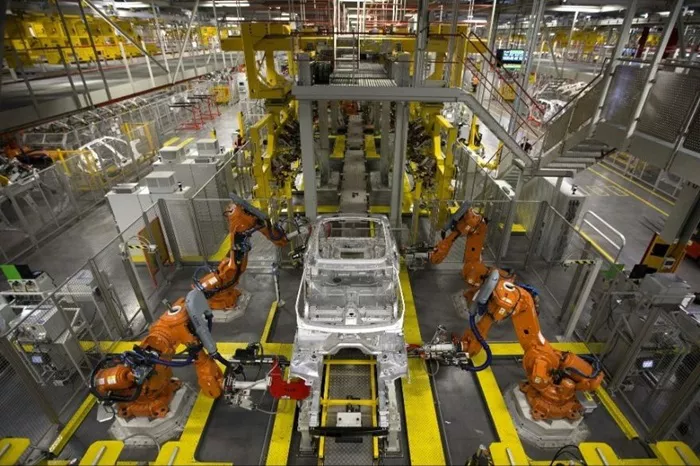Against the backdrop of the global energy structure transformation and the enhancement of environmental awareness, propane (Liquefied petroleum Gas, LPG) generators are gradually becoming a new choice for household backup power and industrial and commercial emergency power supply. Compared with traditional gasoline or diesel generators, propane fuel is generally regarded as cleaner and more environmentally friendly due to its combustion characteristics. But does the propane generator really meet the modern environmental protection emission standards? Will harmful gases be produced during its operation? These problems directly affect the health and safety of users as well as the sustainable development of the environment. This article will conduct an in-depth analysis of the emission characteristics of propane generators, their compliance with domestic and international environmental protection standards, as well as the pollution control strategies in actual use.
Analysis of Emission Characteristics of Propane Generators
Chemical reaction mechanism of propane combustion
The chemical equation for the complete combustion of propane (C₃H₈) is: C₃H₈ + 5O₂ → 3CO₂ + 4H₂O + heat. Theoretically, the complete combustion of 1 cubic meter of propane requires 5 cubic meters of oxygen, generating 3 cubic meters of carbon dioxide and 4 cubic meters of water vapor. However, in actual operation, due to factors such as combustion efficiency and air mixing ratio, the following incomplete combustion products may be produced
Carbon monoxide (CO) : It is produced when there is insufficient oxygen, and its concentration is usually 50-200 PPM.
Nitrogen oxides (NOx) : The high temperature in the combustion chamber causes the oxidation of nitrogen, with an emission of approximately 0.1-0.5g/kWh.
Volatile organic compounds (VOCs) : Unburned hydrocarbon substances, accounting for approximately 0.05%-0.2%.
Emission Comparison with Other Fuels (Table)
Pollutants:
- Propane generator, gasoline generator, diesel generator
- High and low levels of carbon monoxide
- Nitrogen oxides are low, medium and high
- Particulate matter (PM2.5) is extremely low to medium high
- Sulfur oxides are not slightly high
- Data source: Non-road Engine Emissions Report of the United States Environmental Protection Agency (EPA)
Interpretation of Major Global Environmental Protection Emission Standards
US EPA Tier4 Standard
The current strictest emission standards for non-road engines require:
CO limit: ≤5.5g/kWh (power < 19kW)
NOx+HC limit: ≤0.6g/kWh
Particulate matter: ≤0.03g/kWh
Standard technology: Most propane generators meet the requirements through closed-loop electronic fuel injection systems and three-way catalytic converters
EU Stage V Standard
New restrictions on the number of particulate matter (PN) :
- It is required to use a particle filter (DPF) to handle sub-micron particles
- Typical compliant products such as Honda EU2200iP adopt two-stage catalytic technology
China’s National IV non-road Standards
The new regulations implemented in December 2022:
- The CO emission limit has been tightened by 40%
- It is required to configure the OBD fault diagnosis system
- Mainstream market brands (such as Yamaha EF2000P) have passed China’s environmental protection certification
Control of Harmful Gases in Practical Use
Protection against carbon monoxide poisoning
Risk cases of enclosed Spaces
The 2021 report of the US CDC shows that among CO poisoning accidents caused by using generators in garages, propane models account for only 12%, which is much lower than that of gasoline engines (67%).
Safety distance: At least 3 meters from the building
Ventilation requirement: A fresh air volume of 1m³/min must be guaranteed per kilowatt of power
Alarm device: It is recommended to be equipped with a CO detector certified by UL2034
Nitrogen Oxide Control Technology
Solutions adopted by advanced models
Lean-burn technology: The air-fuel ratio is controlled at λ=1.5-1.8
Exhaust gas recirculation (EGR) : Reduces the temperature of the combustion chamber
Selective catalytic Reduction (SCR) : The tail gas is treated with urea solution
Disputes over Greenhouse Gas Emissions
Although the CO₂ produced by propane combustion is 15% less than that of gasoline, yet:
Methane escape: Approximately 2.3% of propane in the supply chain will leak (EDF research data)
Carbon intensity: The full life cycle emissions from the wellhead to the terminal are 73gCO₂e/MJ
Carbon neutrality solution: Bio-propane (such as Neste renewable LPG) can reduce emissions by 80%
User Practice Guide
Purchasing Suggestions
- Make sure to recognize the EPA certification or CARB compliance mark
- Give priority to choosing smart models equipped with oxygen sensors
- For dual-fuel models, the emission data in propane mode needs to be confirmed
Precautions for Use
- Regularly check the sealing performance of the exhaust pipeline
- Avoid prolonged operation at low load (prone to carbon deposition)
- Replace the catalytic converter every 200 hours of operation
Key Points of Maintenance
- Key indicators of component inspection cycle
- The electrode gap of the spark plug after 100 hours is 0.7-0.8mm
- The 50-hour pressure difference of the air filter is less than 2kPa
- The annual inspection of the fuel evaporator shows no frosting or blockage
Conclusion
With the development of hydrogen co-combustion technologies (such as Kohler‘s H2READY generator), propane, as a transitional energy source, will continue to improve its environmental performance. Users should scientifically assess the applicability of such clean power generation equipment in accordance with local environmental protection regulations and their own needs.

